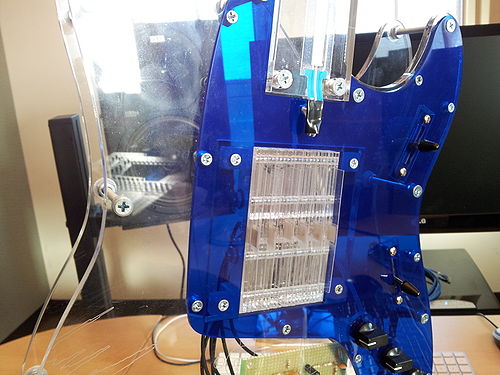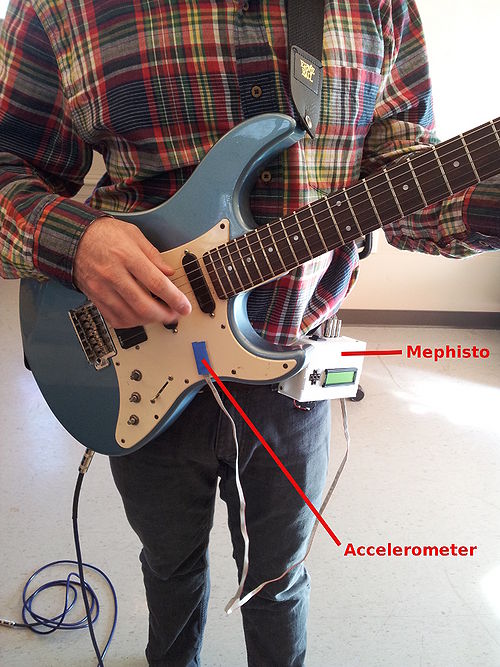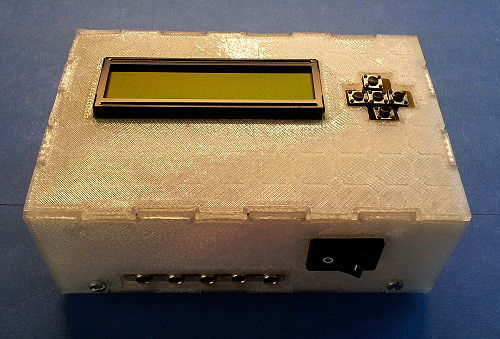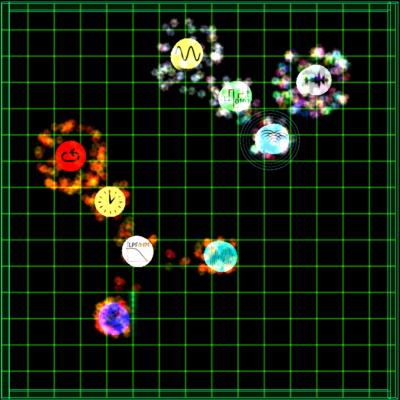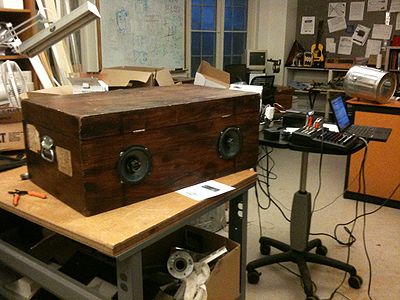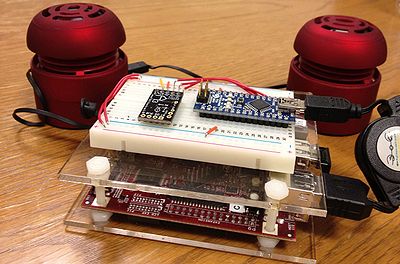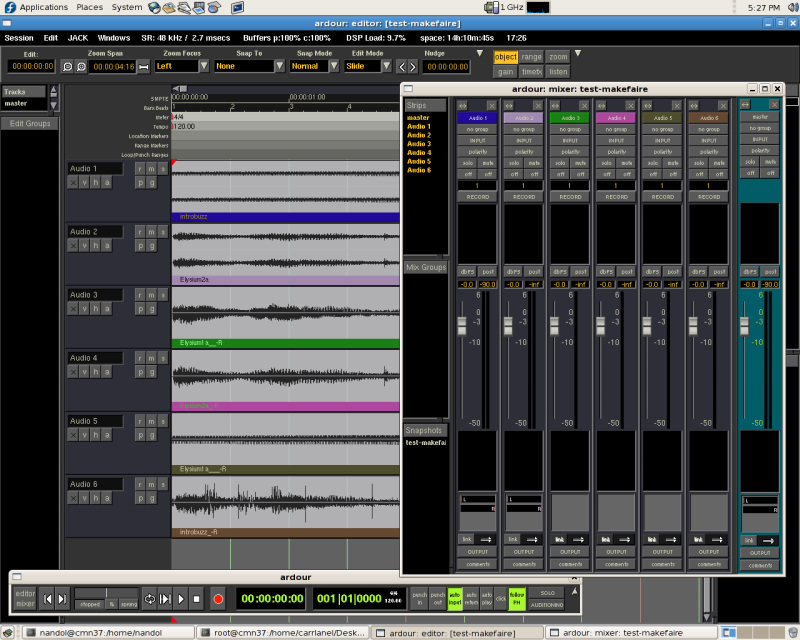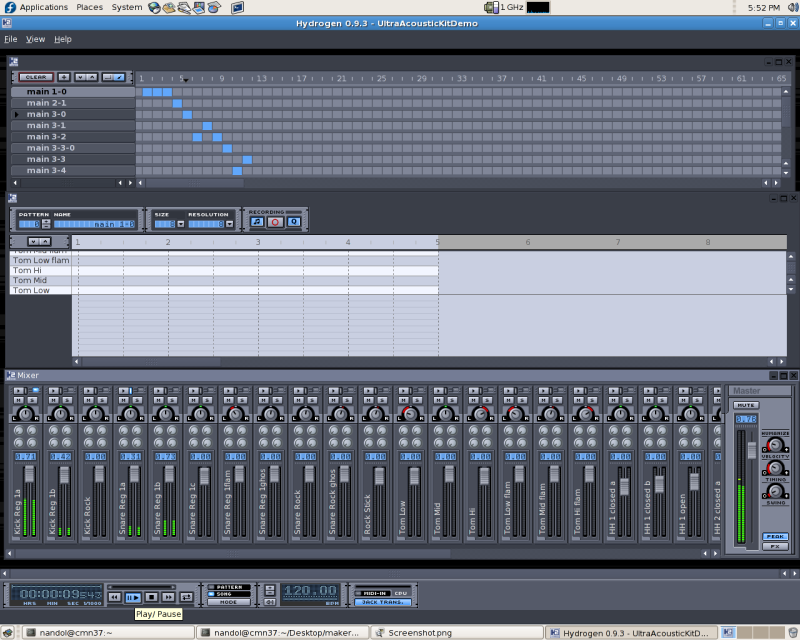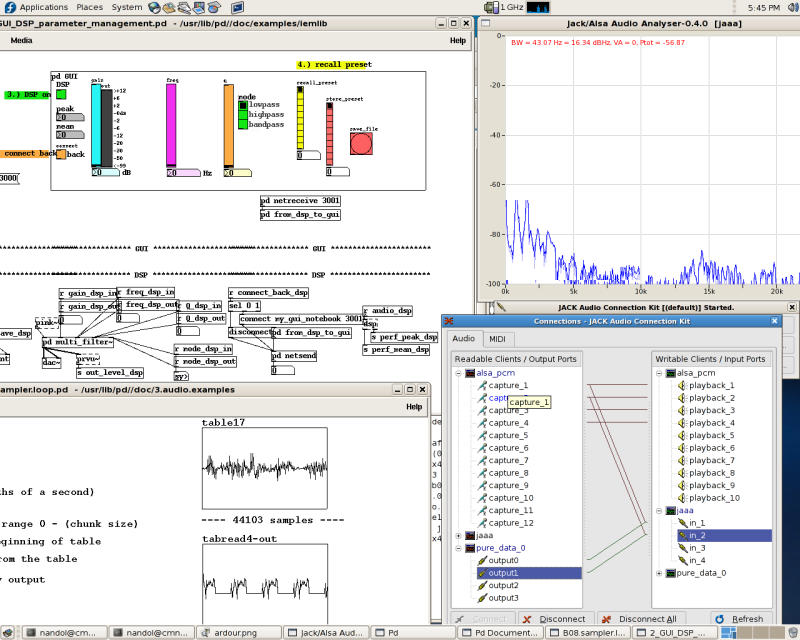MakerFaire
Contents
Introduction
The Center for Computer Research in Music and Acoustics (CCRMA -- pronounced "karma") is an interdisciplinary center at Stanford University dedicated to artistic and technical innovation at the intersection of music and technology. We are a place where musicians, engineers, computer scientists, designers, and researchers in HCI and psychology get together to develop technologies and make art. In recent years, the question of how we interact physically with electronic music technologies has fostered a growing new area of research that we call Physical Interaction Design for Music. We emphasize practice-based research, using DIY physical prototying with low-cost and open source tools to develop new ways of making and interacting with sound. At the Maker Faire, we will demonstrate the low-cost hardware prototyping kits and our customized open source Linux software distribution that we use to develop new sonic interactions, as well as some exciting projects that have been developed using these tools. Below you will find photos and descriptions of the projects and tools we will demonstrate.
The Blade Axe
Romain Michon
The BladeAxe is a guitar-like controller that uses "real world" audio excitations from six piezoelectric films (one per "string") to drive a physical model of a guitar on a laptop. The BladeAxe body is made out of laser cut acrylic sheets and can be easily reproduced. As a fully "plug and play" interface, it can be used on any computer to communicate with our open-source virtual-guitar software.
Mephisto
Romain Michon
Mephisto is a small battery powered open source Arduino based device. Up to five sensors can be connected to it using simple 1/8" stereo audio jacks. The output of each sensor is digitized and converted to OSC messages that can be streamed on a WIFI network to control any Faust generated app. The goal of Mephisto is to provide an easy way for musicians to interact with the different parameters of a Faust object or any other OSC compatible software during a live performance. As a "DIY" open source project, Mephisto only uses open source hardware (Arduino, etc.) and was designed to be easily built by anyone.
Hearing Polyphony - A Game and Experiment!
Madeline Huberth
I work in the Neuromusic lab at CCRMA, whose goal on the whole is to investigate phenomena related to understanding music. Specifically, I've been doing work this past year in how our brain processes polyphony (hearing multiple melodies at once), and will present a game I created that uses the stimuli used in our experiment as a way of understanding the experiment. The experiment and our findings will also be on a poster that I can bring.
Our experiment shows that your brain can detect changes in polyphonic patterns automatically - how easy is it for you to do it consciously? Play and find out!
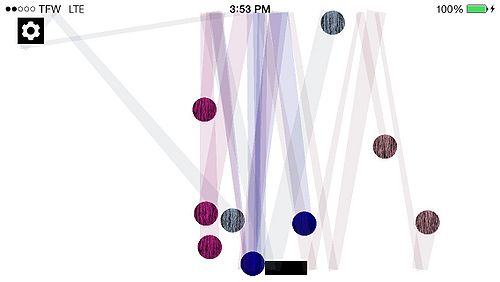
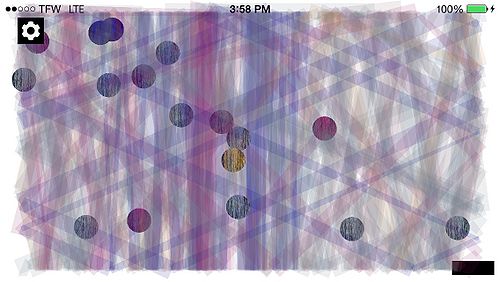
CollideFx
Chet Gnegy
CollideFx is a real-time audio effects processor that integrates the physics of real objects into the parameter space of the signal chain. Much like in a traditional signal chain, a user can choose a series of effects and offer realtime control to their various parameters. In this work, we introduce a means of creating tree-like signal graphs that dynamically change their routing in response to position changes of the unit generators. The unit generators are easily controllable using the click and drag interface and respond using familiar physics, including conservation of linear and angular momentum and friction. With little difficulty, users can design interesting effects, or alternatively, can fling a unit generator into a cluster of several others to obtain more surprising results, letting the physics engine do the decision making.
The Processed Typewriter
Andrew Watts
Other than the human voice, musical instruments convey primarily
abstraction through sound content. We interpret these sounds as music to
varying degrees, but if one were to step away from the cultural
associations, the noise would remain highly ambiguous. With a typewriter
the sounds inherent in the machine's use also contain linguistic meaning.
Having this added layer to work with, a composer could pair the text and
the sounds in a multitude of ways, even utilizing the ambiguity of
semantic meaning with the ill-defined meaning of typewriter sounds. For
this project I am specifically thinking towards a performance in the late
spring during a residency with famed soprano Tony Arnold. Rather than a
typical accompaniment for a solo soprano piece, like as a piano, it would
be much more interesting and musically fertile to have her singing lyrics
which are actively being typed in the background. Not only is the text
being transformed into sound through the vocal line, but also the
hammering away of the typewriter. Furthermore, these sounds and the images
of the text appearing on the page would be processed, enabling a wide
range of articulations, imagery, references, and audio sculpting.
Busk Box
Sasha Leitman
The Busk Box is a street performance system that combines the traditions of wandering street performers and musicians with the modern technologies. Inside of a 1911 wooden trunk, 2 6" speakers, 1 10" subwoofer, 2 class-T amplifiers and a portable mixer are all powered by lithium-ion batteries. In addition, the box is supported by folding wheels and legs which enable the box to be set up and torn down in less than 3 minutes. This platform was designed to bring experimental and electronic music to the San Francisco Fisherman's Wharf district.
Satellite CCRMA
Ed Berdahl, Wendy Ju Satellite CCRMA promotes rapid prototyping of new media. Used by artists and engineers alike, Satellite CCRMA integrates together open-source software and hardware projects. Most importantly, it comes with examples that make it possible for new users to get up and running within a matter of minutes. For more info, please see https://ccrma.stanford.edu/~eberdahl/Satellite/
Software Tools
Planet CCRMA at Home is a collection of open source programs that you can add to a computer running Fedora Linux to transform it into an audio/multi-media workstation with a low-latency kernel, current audio drivers and a nice set of music, midi, audio and video applications (with an emphasis on real-time performance). It replicates most of the Linux environment we have been using for years here at CCRMA for our daily work in audio and computer music production and research. Planet CCRMA is easy to install and maintain, and can be upgraded from our repository over the web. Bootable CD and DVD install images are also available. This software is free.
http://ccrma.stanford.edu/planetccrma/software
Ardour - Multitrack Sound Editor
Hydrogen - Drum Sequencer
Pd, Jack and Jaaa - Real-time audio tools

